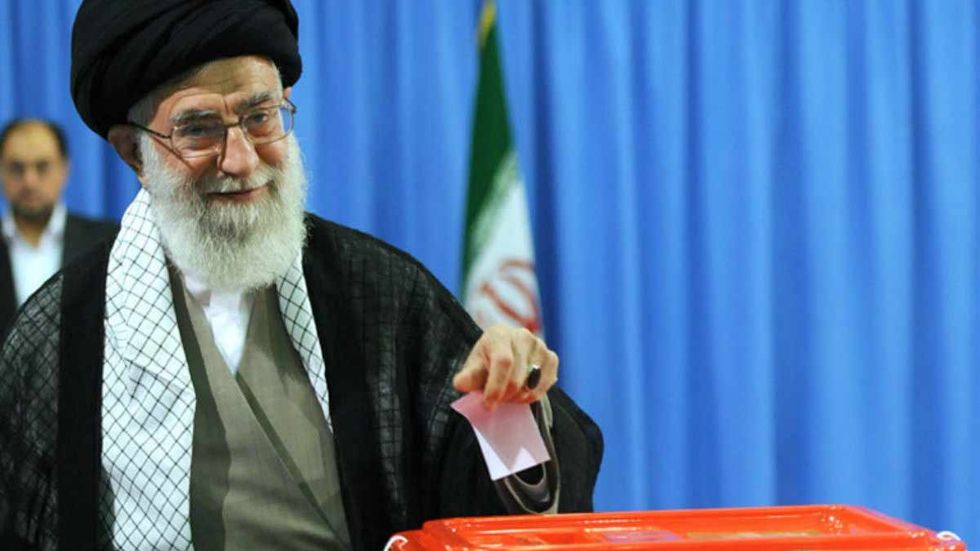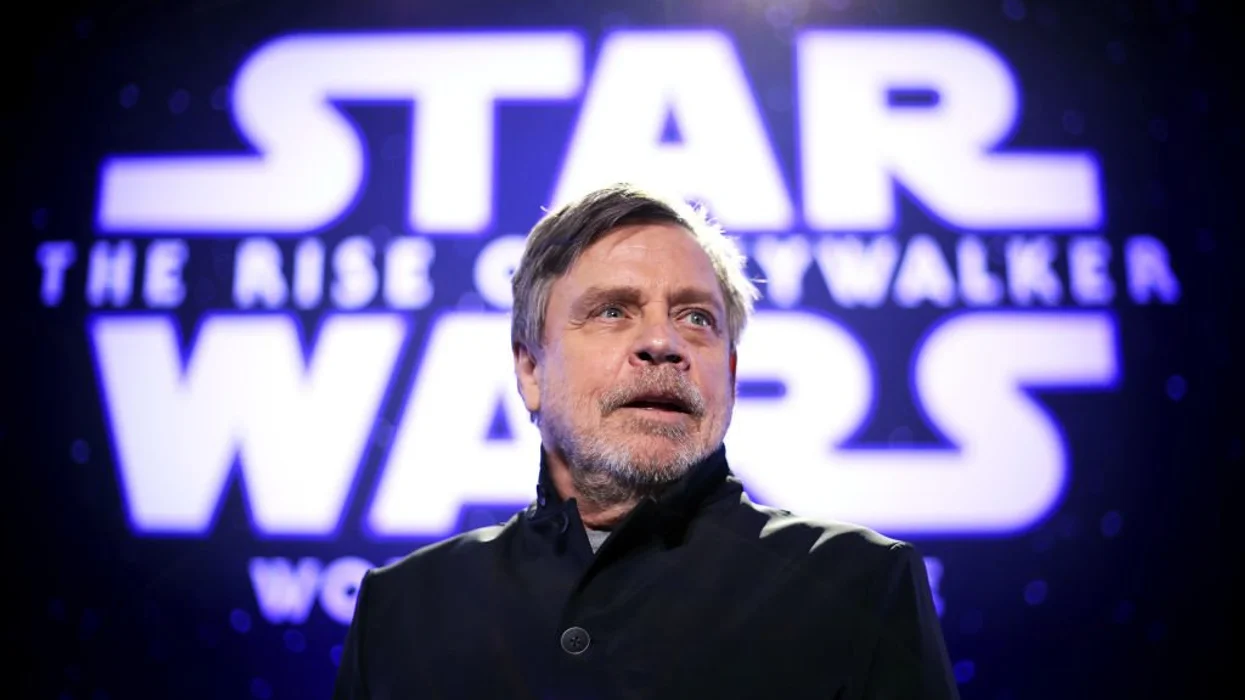
© 2024 Blaze Media LLC. All rights reserved.
Around 1,600 people filed to run for president of Iran and challenge Hassan Rouhani, who is seeking a second four-year term. Only six of them have been allowed on the ballot for election day.
The role of president of Iran varies. Some see him as no more than a figurehead, while others see him as the bridge between the supreme leader (Ayatollah Ali Khamenei) and the people living under his rule.
In post-1979 Islamist Iran, the supreme leader maintains unchecked veto power over all of the nation’s affairs, and dominates foreign policy matters. Still, the president has considerable influence over domestic affairs.
It also must be noted that Iranians who seek the nation’s highest elected office must first be vetted by the 12-man, unelected Guardian Council, which is primarily made up of individuals appointed by the supreme leader. This year, the Guardian Council has granted only six individuals (denying requests from about 1,600 other aspiring candidates) clearance to run for president. All 137 women who registered to run were disqualified (the council has never cleared a woman to run for president)
The mainstream media in America often position some of these individuals as “reformists” and others as “hardliners,” but this distinction is misleading at best. All of the candidates not only have to be personally approved by the nation’s theocratic body, they are also positioning their platform as the best way to advance the interests of a caliphatist regime hell-bent on disrupting global order. With that in mind, here’s a look at the six candidates in Iran’s presidential “election.”
Hassan Rouhani:
Hailed as a “moderate” by The New York Times, the incumbent president helped Iran set the prestigious world record for most executions per capita.
Rouhani is known to use more pragmatic language than his predecessor Mahmoud Ahmadinejad, who infamously promised to “wipe Israel off the map.” Still, Rouhani is a Holocaust-denier who encourages terrorist groups like Hamas and Hezbollah to export Iran’s brand of Islamic totalitarianism throughout the region.
Rouhani played a key role in garnering international support for the Iran nuclear deal between Tehran and the P5+1 world powers (United States, United Kingdom, China, France, Germany, Russia). The deal gave Iran a major cash windfall and allowed for the regime to continue to finance its terrorist proxies in the Middle East.
Several analysts believe Rouhani has a good chance at reelection, as polls indicate that a large percentage of Iranians view him somewhat favorably.
Ebrahim Raisi:
Portrayed in international media as the hardline option to Rouhani, Raisi is the main threat to unseat Rouhani. Raisi is also rumored as a potential successor to Supreme Leader Ali Khamenei (who is in his late 70s and suffering from several ailments). A Shiite cleric, Raisi wears a black turban, indicating that he is a descendant of Islam’s founder, Muhammad.
As part of his foreign policy platform, Raisi said he would consider engaging in diplomatic relations with every country “except the occupying regime of Israel.”
Raisi’s radicalism is exemplified by his views on the 2009 “Green Movement” protests that saw thousands of Iranians march into the streets to demand reform. The regime viciously cracked down on the protests, killing dozens of innocents (with estimates as high as 150), wounding hundreds more, and arresting thousands of dissenters.
Describing the protests as “sedition,” Raisi commented in 2014: “The Islamic System has treated the heads of the sedition with mercy. Those who sympathize with the heads of sedition must know that the great nation of Iran will never forgive this great injustice.”
Additionally, Raisi served on Iran’s 1988 “Death Commission,” which was responsible for exterminating thousands of political prisoners.
Khamenei recently appointed him to serve as the leader of Iran’s largest foundation. It is an extremely prominent post given that the endowment has an estimated value of around $15 billion, according to the Washington Post.
Mohammad Bagher Ghalibaf:
The current mayor of Tehran, Ghalibaf is the former commander of Iran’s Islamic Revolutionary Guard Corps’ (IRGC) Air Force. He was a distant runner-up to Rouhani in the 2013 election.
Ghalibaf, who has spearheaded efforts to revitalize and modernize Tehran infrastructure, is known for his iron-fisted methods.
He has boasted about personally engaging in violence to repress student protests. Ghalibaf once said of one such student protest that occurred in 1999:
“Photographs of me are available showing me on back of a motor bike … beating them [the protestors] with wooden stick … I was among those carrying out beatings on the street level and I am proud of that. I didn’t care I was a high ranking commander.”
Mostafa Mirsalim:
The 70-year-old is Iran’s former minister of culture and Islamic guidance. Mirsalim has criticized the Iran nuclear deal as an objection to Rouhani’s leadership, saying the deal did not do enough to boost the Iranian economy. His statement comes as recent polls show that economic woes remain the most important issue to Iranians. One such poll showed 42 percent of respondents stating unemployment is the most pressing matter in Iran.
From 1981 to 1989, Mirsalim served as an advisor to the supreme leader.
Eshaq Jahangiri:
Rouhani’s vice president has made it clear that he is not a serious contender. He initially registered to run for election as concerns floated around regarding whether Rouhani would be disqualified by the Guardian Council. Jahangiri is running to “stand by Rouhani and complement him.” He is almost certainly going to drop out of the race so as not to split votes with the man he serves under.
Mostafa Hashemi Taba:
Like Jahangiri, he is expected to soon throw his full weight behind Rouhani’s candidacy. Hashemi Taba once served as Iran’s vice president and also headed the country’s Olympic committee. He ran for president in 2001, but came in dead last of the 10 approved candidates, accumulating only 0.1 percent of the vote.
What’s next?
Iranians will head to the ballots on May 19. Local elections will occur on the same day to decide members of city and town councils. Parliamentary elections, however, do not happen on the same day as the presidential election. Iran’s last parliamentary elections were in early 2016 and are held every four years.
Depending on the year, reported turnout varies from around 51 percent to 85 percent, according to the BBC.
On numerous occasions, watchdog groups have called into question Iran’s elections as free and fair. In 2009, the regime allegedly rigged ballots in favor of former President Mahmoud Ahmadinejad.
Want to leave a tip?
We answer to you. Help keep our content free of advertisers and big tech censorship by leaving a tip today.
Want to join the conversation?
Already a subscriber?
more stories
Sign up for the Blaze newsletter
By signing up, you agree to our Privacy Policy and Terms of Use, and agree to receive content that may sometimes include advertisements. You may opt out at any time.
© 2024 Blaze Media LLC. All rights reserved.
Get the stories that matter most delivered directly to your inbox.
By signing up, you agree to our Privacy Policy and Terms of Use, and agree to receive content that may sometimes include advertisements. You may opt out at any time.


